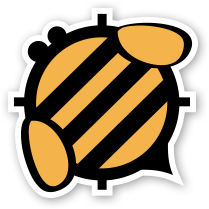from _hbanalysissurface import HBAnalysisSurface
from surfaceproperties import SurfaceProperties, SurfaceState
import utilcol as util
import honeybee
try:
import plus
except ImportError as e:
if honeybee.isplus:
raise ImportError(e)
[docs]class HBFenSurface(HBAnalysisSurface):
"""Honeybee fenestration surface.
Args:
name: A unique string for surface name
sorted_points: A list of 3 points or more as tuple or list with three items
(x, y, z). Points should be sorted. This class won't sort the points.
If surfaces has multiple subsurfaces you can pass lists of point lists
to this function (e.g. ((0, 0, 0), (10, 0, 0), (0, 10, 0))).
is_name_set_by_user: If you want the name to be changed by honeybee any case
set is_name_set_by_user to True. Default is set to False which let Honeybee
to rename the surface in cases like creating a newHBZone.
rad_properties: Radiance properties for this surface. If empty default
RADProperties will be assigned to surface by Honeybee.
ep_properties: EnergyPlus properties for this surface. If empty default
ep_properties will be assigned to surface by Honeybee.
Usage:
from honeybee.hbsurface import HBSurface
from honeybee.hbfensurface import HBFenSurface
# create a surface
pts = [(0, 0, 0), (10, 0, 0), (0, 0, 10)]
hbsrf = HBSurface("001", pts, surface_type=None, is_name_set_by_user=True)
glzpts = [(1, 0, 1), (8, 0, 1), (1, 0, 8)]
glzsrf = HBFenSurface("glz_001", glzpts)
# add fenestration surface to hb surface
hbsrf.add_fenestration_surface(glzsrf)
# get full definiion of the surface including the fenestration
print(hbsrf.to_rad_string(include_materials=True))
# save the definiion to a .rad file
hbsrf.rad_string_to_file(r"c:/ladybug/triangle.rad", include_materials=True)
"""
def __init__(self, name, sorted_points=None, is_name_set_by_user=False,
rad_properties=None, ep_properties=None, states=None):
"""Init honeybee surface."""
_surface_type = 5
_is_type_set_by_user = True
sorted_points = sorted_points or []
states = states or ()
HBAnalysisSurface.__init__(self, name, sorted_points, _surface_type,
is_name_set_by_user, _is_type_set_by_user)
sp = SurfaceProperties(self.surface_type, rad_properties, ep_properties)
self._states[0] = SurfaceState('default', sp)
for state in states:
self.add_surface_state(state)
self.__isChildSurface = True
# Parent will be set once the fen surface is added to a prent surface
self._parent = None
self._isCreatedFromGeo = False
# TODO: Parse EnergyPlus properties
[docs] @classmethod
def from_ep_string(cls, ep_string):
"""Init Honeybee fenestration surface from an ep_string.
Args:
ep_string: The full ep_string for an EnergyPlus fenestration.
"""
# clean input ep_string - split based on comma
_segments = ep_string.replace("\t", "") \
.replace(" ", "").replace(";", "").split(",")
name = _segments[1]
_pts = range((len(_segments) - 11) / 3)
# create points
for count, i in enumerate(xrange(11, len(_segments), 3)):
try:
_pts[count] = [float(c) for c in _segments[i: i + 3]]
except ValueError:
raise ValueError(
"%s is an invalid value for points." % _segments[i: i + 3]
)
# create the surfaceString
return cls(name, sorted_points=_pts, is_name_set_by_user=True)
[docs] @classmethod
def from_geometry(cls, name, geometry, is_name_set_by_user=False,
rad_properties=None, ep_properties=None, states=None, group=False):
"""Create a honeybee fenestration surface from Grasshopper geometry."""
assert honeybee.isplus, \
'"fromGeometries" method can only be used in [+] libraries.'
name = name or util.random_name()
if isinstance(name, basestring):
names = (name,)
elif not hasattr(name, '__iter__'):
names = (name,)
else:
names = name
namescount = len(names) - 1
srf_data = plus.extract_geometry_points(geometry)
cls._isCreatedFromGeo = True
if not group:
hbsrfs = []
# create a separate surface for each geometry.
for gcount, srf in enumerate(srf_data):
for scount, (geo, pts) in enumerate(srf):
try:
_name = '%s_%d_%d' % (names[gcount], gcount, scount)
except IndexError:
_name = '%s_%d_%d' % (names[-1], gcount, scount)
_srf = cls(_name, pts, is_name_set_by_user, rad_properties,
ep_properties, states)
_srf.geometry = geo
hbsrfs.append(_srf)
# check naming and fix it if it's only single geometry
if (gcount == 0 or gcount <= namescount) and scount == 0:
# this is just a single geometry. remove counter
for hbsrf in hbsrfs:
hbsrf.name = '_'.join(hbsrf.name.split('_')[:-2])
elif gcount == 0 or gcount == namescount:
# this is a single geometry with multiple sub surfaces like a polysurface
for hbs in hbsrfs:
bname = hbs.name.split('_')
hbs.name = '%s_%s' % ('_'.join(bname[:-2]), bname[-1])
return hbsrfs
else:
_geos = []
_pts = []
# collect all the points in a single list
for srf in srf_data:
for geo, pts in srf:
_pts.extend(pts)
_geos.append(geo)
_srf = cls(names[0], _pts, is_name_set_by_user, rad_properties,
ep_properties, states)
_srf.geometry = _geos
return _srf
@property
def is_created_from_geometry(self):
"""Return True if the surface is created from a geometry not points."""
return self._isCreatedFromGeo
@property
def isHBFenSurface(self):
"""Return True for HBFenSurface."""
return True
@property
def is_child_surface(self):
"""Return True if Honeybee surface is Fenestration Surface."""
return self.__isChildSurface
@property
def parent(self):
"""Return parent surface for this fenestration surface."""
return self._parent
@property
def geometry(self):
"""Return geometry."""
assert honeybee.isplus, \
'"geometry" property can only be used in [+] libraries.'
if self.is_created_from_geometry:
return self._geometry
else:
return self.profile
@geometry.setter
def geometry(self, geo):
"""Set geometry."""
assert honeybee.isplus, \
'"geometry" property can only be used in [+] libraries.'
assert honeybee.isplus, \
'"profile" property can only be used in [+] libraries.'
self._geometry = geo
@property
def profile(self):
"""Get profile curve of this surface."""
assert honeybee.isplus, \
'"profile" property can only be used in [+] libraries.'
return plus.polygon(
tuple(plus.xyz_to_geometrical_points(self.absolute_points))
)
